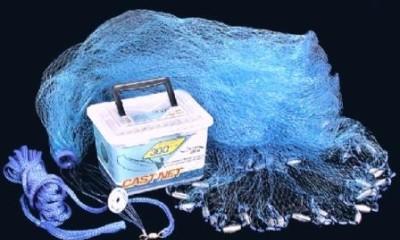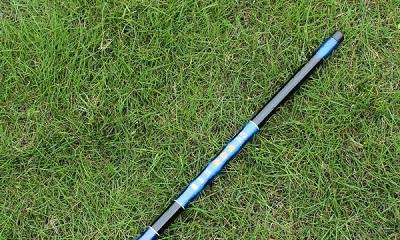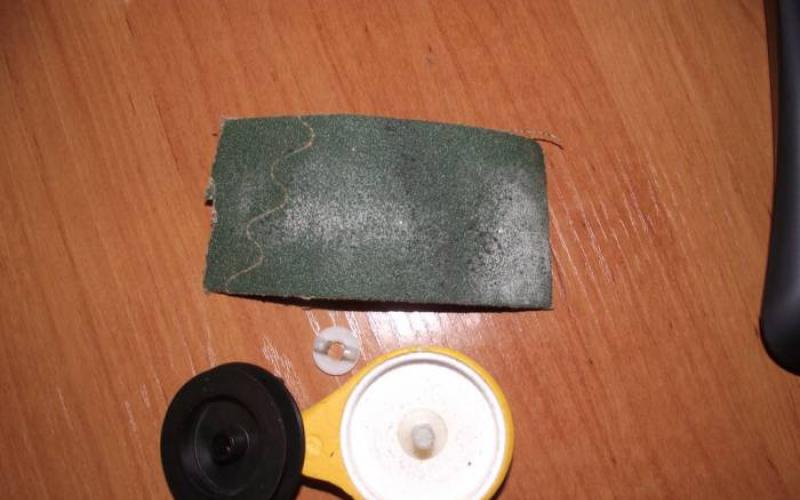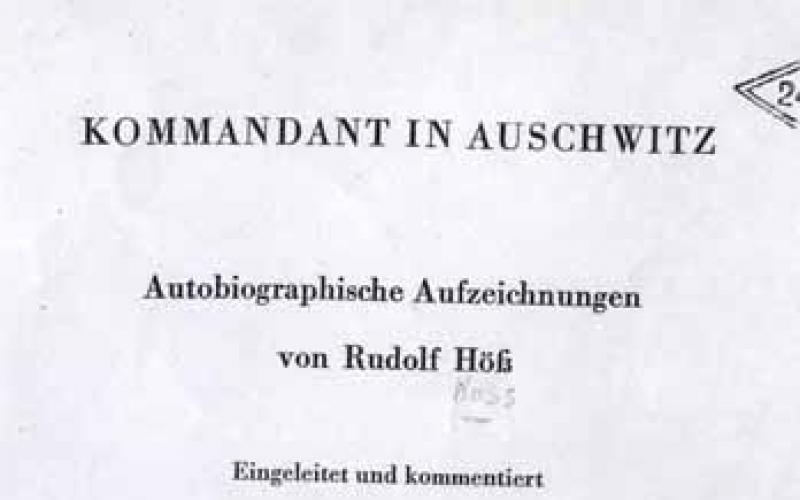Tea is a stylish drink, which means that it could very well become a fashion trend, as evidenced by the emergence of some new brands on the market that bring new sensations and tastes to consumers. All this is true, and yet true gourmets and connoisseurs of tea prefer only those brands and tea houses that are time-tested and whose quality they can unconditionally trust. Today we will talk about the best European tea brands with a rich history and tradition.
Ireland is a country of "hardened" tea lovers, which they are helped to enjoy by Barry's, a tea house founded in 1901 and located in the second largest Irish city of Cork. The best European tea brands for gourmets and connoisseurs. The best European tea brands for gourmets and connoisseurs. For five generations, the Barry family has been producing and selling tea, offering lovers the best varieties of tea grown in Ceylon, Kenya and the tea region of India - Assam.

True connoisseurs of English tea believe that the varieties offered by Barry's are best suited for drinking tea with milk, without which this drink is almost unthinkable for the British. From Barry's you can buy several dozen different varieties of both leaf and bagged tea. Barry's often holds various contests and parties for its consumers. The brand did not stand aside from such a significant event as the release of new version"Alice in Wonderland", to give everyone the opportunity to experience the flavor of tea drinking in the company of the Mad Hatter.




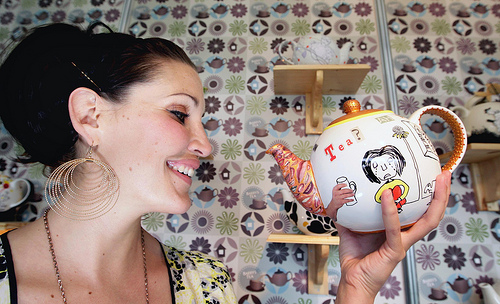
Opening his shop and patisserie on the Place de la Madeleine in Paris in 1886, August Fauchon quickly established himself as one of France's finest gourmet brands.

If you look into the tea section of the Fauchon company store, you will find about 60 types of tea here, which can be purchased both by weight and in branded jars and bags. Fashon sells varieties from the best tea plantations in the world, some blends of flavored teas are exclusive, such as Kee-Yu blend, Jungpana tea with a rich peach aroma is also bought here, and Darjeeling tea lovers also come to shop. ". Having made a purchase, in the cafe at the store you can enjoy an unusual dessert with a cup of tea. Every day, a tasting of some new tea is held in the Fauchon store; those who have time and often visit Paris have the opportunity to try any sort of elite tea.
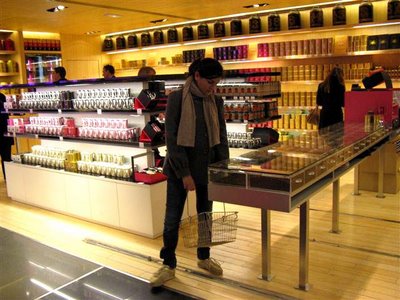









Kusmi
Among the elite tea houses in Europe, the brand founded by our compatriot Pavel Mikhailovich Kuzmichev in 1867 in St. Petersburg deserves special attention. Within a very short time, Kuzmichev became the main Russian supplier of tea, including supplies for the Russian imperial court. The best European tea brands for gourmets and connoisseurs. After October revolution In 1917, Kuzmichev was forced to leave Russia and settle in Paris, where he opened a tea house, which still bears his name and is very popular.
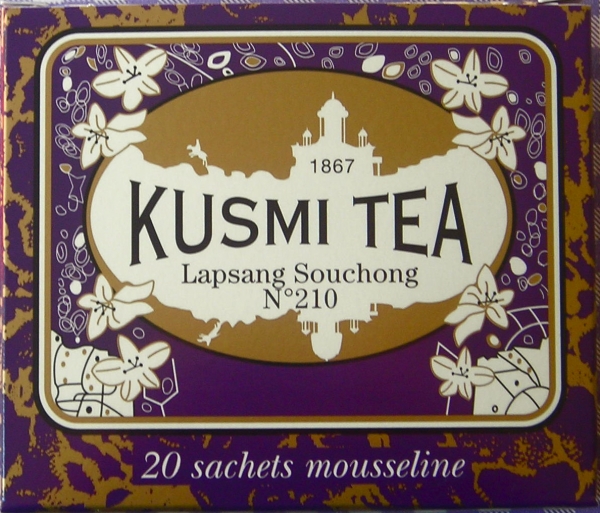
The Kusmi brand is one of the best tea houses in Europe. Kusmi offers surprisingly fragrant teas of both classic varieties of black, green, red and white, as well as herbal, fruit blends and even exotics with lotus flowers and algae. For flavored varieties, only natural additives are used, which are imported from Madagascar, Calabria and Grasse. Many tea varieties are made according to original recipes from the beginning of the last century and bear the poetic names "Prince Vladimir", "Anastasia", "Troika", "Samovar", "Traktir", "St. Petersburg". And Zubrovka tea is made from a mixture of Chinese tea with a taste of the so-called bison grass. Tea is packaged in small branded, very colorful boxes that look like small charming souvenirs. For nearly 150 years, Kusmi Tea House has managed to maintain high level tea quality, and the glamorous packaging design is considered the most stylish not only in Europe but also in the world.



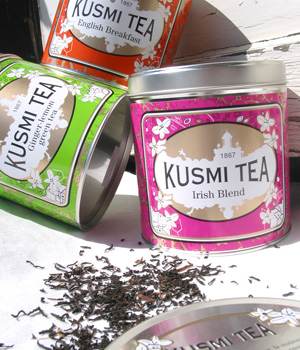


![]()
The British tea house "Fortnum and Mason" offers tea that will satisfy the taste of even the most demanding connoisseurs and tea snobs. The best European tea brands for gourmets and connoisseurs. Since its founding in 1707, Fortnum and Mason has been the main supplier of tea to the English aristocracy.

Every day, crowds of tourists from the British capital line up in a long line to get into the famous Fortnum and Mason tea house (almost like the famous Harrod’s department store), which is also known for its magnificent cafe. The British, French, Japanese, Germans and Chinese wander among the tea shelves lined with amazing jars of delicious teas grown on the plantations of India, Ceylon and China, and which can only be bought here in this shop in Piccadilly. Such exclusivity makes this place legendary and deserves a visit for any tea aficionado. And after the purchase, you can taste dessert with a cup of tea in a cafe. By the way, when the Japanese and Chinese are here, they usually ask to serve them the tea that Queen Elizabeth II prefers. Rumor has it that Her Majesty likes "Earl Grey", to which she is served biscuits. Fortnum and Mason's signature tea is Fort Mason - special blend with orange blossoms. This is a very strong and peculiar drink, which you may not like the first time, but you definitely need to try it again, you should refuse it only after the third attempt.









In Germany, the tea house “J. Eilles", founded in 1873 by Joseph Eilles, who is considered the founder of the Munich tea drinking culture. Joseph Eilles received royal permission and became the supplier of the entire Bavarian aristocracy, and also formed an excellent and very demanding taste among his compatriots.

The philosophy of the founder still remains indisputable and is not subject to revision. Opened in 1927 on the Residence Strasse in Munich, directly opposite the Bavarian National Opera, the brand shop sells unique teas grown on the best plantations in the world - black varieties from the Himalayas, Ceylon, China, Indonesia and East Africa, as well as best Japanese green tea blends.

![]()

The Parisian tea house Betjeman and Barton was founded in 1919 in strict accordance with British traditions, but with elements of French style. Every day, visitors to the brand store on Malesherbe Boulevard have the opportunity to taste at least 200 varieties packed in bright containers.

Betjeman and Barton in Paris has varieties that cannot be found anywhere else, for example, Prince Charles has a soft spot for Pouchine, a bergamot and citrus-flavoured tea that is delivered to him from Paris. Here, tea lovers can also purchase unique accessories - a collection of Chinese tea jars and boxes made of rare woods, a strainer, teaspoons and much more. To culinary delights tea house In addition to desserts, there are rare tea jellies.





Tea house Mariage Frères, with its rich history, can be called the French answer to the British house Fortnum & Mason. Around the same time (circa 1850) that Louis Vuitton produced his first legendary suitcase, the brothers Henri and Edouard Mariage began to import tea into France.

The historic building of the company store in the fourth administrative district of Paris with a small museum attracts tea lovers from all over the world. Celebrities such as Elton John, Hugh Grant and Madonna have been here. When you first visit the store, standing in front of a counter with 400 varieties of tea, you may feel a little dizzy, and asking for "Earl Gray", you may be confused if you are asked which of the 60 varieties of "Earl Gray" you prefer. Mariage Frères also offers its own blends, especially flavored green and white teas. One of the first was a tea blend called "Marco Polo", it was created by the current president of the company, Kitty Cha Sangmanee, who came to Paris from Thailand as a very young man and entered the service of the tea house. His interest in the business and excellent knowledge of tea prompted the heiress - Henri Mariage's granddaughter Martha - to entrust him with a high post. Sangmani's skill is so great that many tea companies that have tried to reproduce his compositions have been able to obtain only what is comparable to a copy of the artist's painting printed on Xerox.




Concluding the story about the best tea houses in Europe, we hope that when you travel to these cities, you will find the opportunity to look into branded shops and bring home some surprisingly rare or favorite tea.
The material is presented by the TIGREIT Company - the leading Russian company - an expert on the tea market
Choosing educational programs is like booking a trip: we buy something that cannot be touched or felt here and now. Therefore, we have to resort to various clues that can give an idea of what awaits us. From our clients, which include both business owners and hired managers of large and medium-sized companies, we learned about the most common mistakes and frustrations they faced when choosing an Executive Education program.
Although the Executive MBA programs remain the best-known programs for top managers, most executives prefer short (from one or two days to several weeks) focused programs. Typically, such programs involve not young professionals (as in MBA programs) or novice managers (as in EMBA programs), but professionals with significant experience. Their goal is not only to learn from top teachers, but to find solutions to specific problems by exchanging experience with other students from different countries, industries and business functions.
The widest choice of Executive Education programs is offered by foreign business schools. Every year, hundreds of thousands of top managers and entrepreneurs from all over the world become their participants. Listeners from Russia are just discovering this opportunity for themselves. It is all the more important to effectively spend the budget and time allocated for training.
Numerous studies show that only 50% of participants are satisfied with courses designed specifically for top managers. And, as the experts we interviewed testify, they often have themselves to blame.
“A friend of mine studied in an excellent program in HBS/INSEAD/Columbia Business School and said it was amazing. So I need it too! What could be wrong here?" A lot of things could be wrong.
First, how reliable is a friend's recommendation? Training programs for top management is an expensive undertaking, and it is often difficult for people even to themselves to admit that there could be more effective method spend time and money.
Second, did your friend have a chance to compare that program with all the other possible alternatives? Because if there was no such possibility, how would he know that this was the best option? When we choose a car, we do not question the quality of the product. bmw. In reality, we ask ourselves if this BMW model has advantages over a similar production mercedes benz or Lexus.
So why take a different approach to the choice of educational programs for top management? Three-day course "Digital Marketing: Consumers, Planning, ROI" in Columbia University excellent without a doubt. But the question we really need to ask ourselves is: is it any better than the four-day Digital Marketing Strategies for the Digital Economy course in Wharton or dozens of other digital marketing courses at top schools around the world.
Well, and the most important thing is that your colleague or friend is not you. And it is highly likely that your educational needs differ greatly. What works for them doesn't have to work for you.
2. I will choose a well-known brand
The brand factor is important. Brands are a guarantee of quality, and that is why we love them so much. Everything they offer Harvard Business School or Stanford Graduate School of Business does not need additional advice. However, brands can mislead potential customers. It often seems to us that the best schools offer only the highest quality programs in any field. However, the variety of Executive Education courses is increasing so rapidly that no single school can offer everything.
Even if we consider the proposals of the best two, three or even ten schools, the choice is still inevitably limited. Why artificially limit yourself in the presence of a huge number of programs in the leading universities of the world? This is the way to miss out on secret treasures - unique courses that provide deep immersion in industry and regional topics. For example, a course in medical marketing at a business school University of California In Los Angeles. Or a logistics leadership course offered by a Canadian business school. Schulich. Or a course on financial accounting in the global oil and gas business from the school University of Texas in Austin.
Moreover, no one can be the first in absolutely everything. FC Barcelona may be the best football team in the world, but that doesn't mean that every player on that team is the best player in the world in that position at any given time. The same logic applies to universities and other organizations offering educational programs. Naturally, any course at INSEAD or IMD good. Some of their courses may even be the best in the world. But this does not mean that similar courses at Columbia University or Berkeley in some way they are inferior.
For example, if you are looking for something that is not as highly specialized as a course on digital innovation in the travel industry from the Spanish IE Business Schools, there will most likely be many options, and the optimal one will not always be obvious. Self-limiting brand choice increases your risk of overpaying, traveling further, or waiting longer than you would like to start learning.
3. I'm used to being price oriented.
The cost is rarely directly related to the quality of the program itself. To a greater extent, it is influenced by the general pricing policy of the school, and in some cases the marketing strategy of this particular program. If you take American schools, in most cases, a day of study in any program in the same school costs the same. For example, if the cost of one day is $2,000, then a three-day program will cost $6,000, and a five-day program will cost $10,000. And while programs vary in price, most schools will range between $1,000-$2,000 per day. Such arithmetic is valid for any school in the top 50, with the exception of the most expensive ones. There may be slight variations within the same school, but they are in no way a reflection of the quality of the program itself.
True, sometimes the prices for programs are still significantly higher than the average prices for the school. For example, in Wharton, the SEO Academy program costs $20,000 for just two days of training. However, it would be more correct to consider such a high cost as a marketing tool designed to emphasize the exclusivity of the program itself. A very expensive program can indeed be excellent, but this conclusion must be drawn explicitly not from its cost.
Picking the cheapest program because it's cheaper is an even bigger mistake. The most expensive component of management education is the time of the top manager himself, or, in other words, the cost of lost profits. The time of top managers is priceless, its waste is extremely expensive for both companies and managers themselves. Only obtaining the most valuable and applicable skills and knowledge in exchange for such an investment can be a sound strategy. Saving a few hundred or even thousands of dollars on a training program only seems like a good cost-cutting strategy, and may actually be a total waste if the program does not end up delivering the expected value to the participant.
4. I'll go to the star professor
Choosing a program just because it's being taught by a star teacher is a relatively new practice that is becoming a significant trend. Naturally, learning from the gurus of global management is prestigious and interesting. After all, these educators have become industry rock stars for a reason: they write best-selling books, teach generations of successful business people, and develop concepts that take business understanding to the next level. So what could be wrong with learning from such people? Nothing if your real goal is to learn firsthand about a particular concept that this particular professor came up with (and then brag about it for the rest of your life).
However, the name alone is not enough to make the classroom experience as productive as possible. Thoughtful and innovative course structure, exchange of experience with other participants, deep and informative training materials are all important components of the education of a top manager. Sacrificing them just to get into a celebrity class is not the most efficient way to spend your time. Also, chances are good that you will end up in a class with people who share this "fanclub philosophy". There's nothing wrong with that in general, but if they just came to see their idol, you probably won't learn much from them.
This does not mean that one should deliberately look for courses with the least experienced teaching staff. Naturally not! Just avoid the mistake of ignoring topic, course structure, participant profiles, and other important factors in your decision making process.
5. The main thing is knowledge. What to do with them - then I'll figure it out
One of the most common mistakes is not having a precise goal to be achieved with the help of educational program. Leadership training is a unique and exciting experience: the opportunity to be outside the office, meet interesting and outstanding people, learn and discuss something new. But if the goal of acquiring this experience is formulated vaguely, over time, the student of the course may suddenly realize that he took part in an educational game rather than received an education.
On the contrary, if new knowledge is associated with an urgent business need and is prioritized, then training will take the manager to a whole new level of development.
This is far from full list mistakes that top managers make when choosing management courses in well-known foreign schools. But overcoming these five guarantees a radical improvement in the quality of learning!
Large companies often change the names of the same products for different countries. If you find yourself in search of a particular product while in another country, then be aware that what you are looking for may be hiding under a different name.
We invite you to find out which world-famous brands are changing the names of their products.
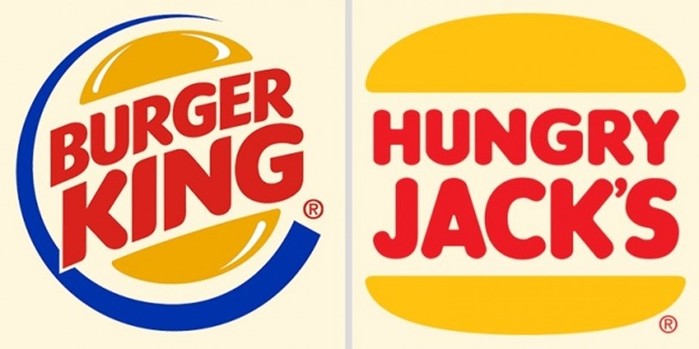
Burger King
The first Burger King appeared in the US in 1954, and since then the brand has begun to open new restaurants around the world. However, before entering the Australian market, the company's executives found out that there was already a brand with the same name. So Burger King invented a new name for Australia: Hungry Jack.

Ax
Unilever founded Ax in France in 1983, but in some countries the name was already taken by other brands. In addition, in English-speaking countries, this name does not fit in with perfumery, since Ax literally translates as an ax. In order to distribute products in the UK, Ireland, Australia, New Zealand and China, the company adopted the Lynx name.

Danone
Danone was founded by Spanish pharmacist Isaac Carasso. He gave the name in honor of his son Daniel, who had the nickname Danone in the family. When entering the US market, the company's leaders decided to make the brand more American, as the former name was mispronounced by the Americans, who divided it into two words Dan and One.
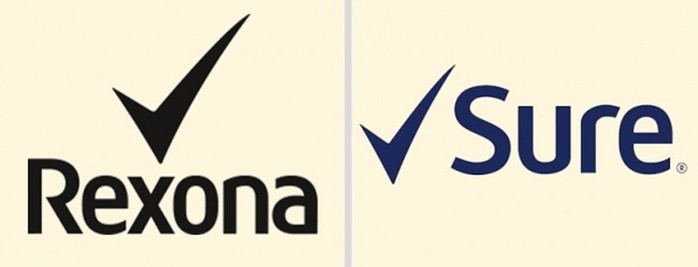
Rexona
Like Ax, Rexona is a trademark of Unilever. In the UK, the brand is known as Sure, in the US as Degree, in Japan as Rexena, and in South Africa as Shield.
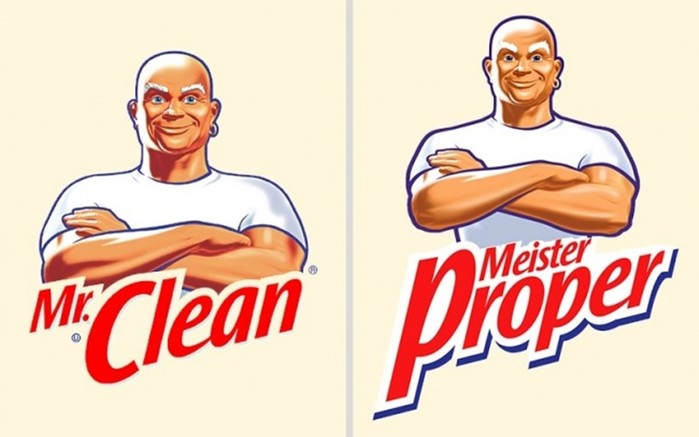
Mr. clean
The record holder for the number of renames is the brand Mr. clean. In almost every major country, this detergent has its own given name. Here are just a few of them: Mr. Clean (USA, Canada), Meister Proper (Germany), Monsieur Propre (France), Maestro Limpio (Mexico and Latin America), Maestro Limpio (Italy) and Mister Propper (Russia). In the UK and Ireland, it is simply called Flash.
Crest
Procter & Gamble manufactures toothpaste Crest since 1955. In Germany, Poland, Bulgaria, Ukraine, Russia and some other countries, it has a different name: Blend-a-honey.

Dove
You can buy Dove chocolate in most countries around the world, but the same product in the UK, Egypt, and India are called Galaxy.

Twix
This chocolate was originally called Raider and was first released in the UK in 1967. In 1979 the product was imported to the US under the name Twix. However, in many European countries, it is still sold under the brand name Raider.
![]()
Lay's
Walkers was introduced to the UK in 1948. In 1989 PepsiCo, the maker of Lay chips, bought Walkers. After that, the packaging changed the design, but in Britain the name was kept.
25.10.2016
The question of why people buy branded goods strikes right at the heart of the consumer society. Now, if we knew for sure, then it would be clear how to reorient the population towards eternal values, but so far all this is just guesswork. And yet we will try to answer this burning question.
Branded goods as prestige
People buy branded goods because it is prestigious. The very concept of prestige is conditional. Moreover, it makes people manageable. In the mass, a person obeys not reason, but feelings, emotions, which is why so many problems arise. For example, in the teenage community it is customary to wear hats of a certain company, and if a person prefers a hat from another manufacturer, then he automatically falls into the “untouchable” caste. How much does this behavior make sense from the point of view of the mind? Obviously not much.
Therefore, the first answer to the question of why people buy branded goods is so as not to stand out and, perhaps, to ingratiate themselves with people important to a person.
One should not think that such a system of values reigns only in the community of teenagers. Russia is strongly influenced by Western tastes and institutions, so the idea of hierarchy is no longer alien to our country. And the things that a person possesses clearly show at what stage of "development" he is. The calculation is simple: the more branded things a person has, the better he is.
Branded goods as an introduction to globalization
Globalization is to blame for everything. It is difficult to argue with the fact that a person is lonely. To escape from the hell of one's own subjectivity, all means are good. It may seem paradoxical, but people buy branded goods so as not to feel so abandoned. For example, the advertisement reads: “This is the T-shirt worn by Brad Pitt himself!” Doesn't a person want to join? Of course you do, what's the question?
And now a person buys this T-shirt and feels much better, but not for long. And all because Pitt has many other benefits of Western civilization, and Mr. Petrov from the Russian hinterland has only a copy of the T-shirt of a famous actor. It is not surprising that Petrov again plunges into melancholy. But for a while, he was still happy.
Branded goods as a semblance of happiness
A person wants to buy a portion of happiness. This point is organically connected with the previous one, we can say that this is a more general conclusion from it. A woman buys a new dress and at the moment of purchase it seems to her that all her dreams have come true, and in general she is at the top of bliss, but a week passes, and again life is dragged out by dullness. And all because it was not about the dress, the man wanted to buy himself a little happiness.
But such an enterprise, as a rule, fails, because satisfaction lies within a person, and not outside. If there is no peace inside, then the consumer fever gives only temporary relief. In general, if a person is unhappy or preoccupied with something, then life is perceived by him as a disease and a heavy burden, in such a hopeless existence only small joys matter.
There is no need to think that branded items are bought for quality at a time when all clothes are sewn in the same Chinese factories, of course, in compliance with the technology, and yet you should not flatter yourself. Branded items are a symbol of something else, they do not represent value in and of themselves.


